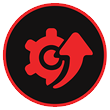Windows 10 Tip: Make Microsoft Edge Better with Extensions

Like other modern web browsers, Microsoft Edge supports extensions that can be used to add functionality beyond that provided by its maker. Extensions are available via the Windows Store and they are managed directly in Edge.
Note: This tip is derived from the Windows 10 Field Guide, which is now being updated for the Windows 10 Creators Update.
Some popular extensions include:
AdBlock. This highly recommended extension blocks all annoying ads, malware, and tracking mechanisms from appearing while you’re browsing the web.
LastPass. This award-winning password manager saves your passwords securely in the cloud and creates complex passwords. It works across platforms, including on popular mobile devices, giving you secure access to your passwords from anywhere.
Microsoft Translator. This useful extension will translate foreign language pages for over 50 languages. When you encounter a page in a different language, the Microsoft Translator icon will appear in the address bar; just click it to instantly translate the page to your currently configured language.
Find Edge extensions
To browse available extensions, open Edge and select Settings and More (“…”) > Extensions. Then, in the Extensions pane that opens, select “Get extensions from the Store.” The Windows Store app will launch and navigate to the part of the store dedicated to Edge extensions.

Extensions work just like apps and other items in Windows Store. Each extension gets its own page, complete with screenshots, a description, ratings and reviews, and other information.

To install an extension, click the Install button. After the download and install is complete, the Install button changes to a Launch button. If you click that button or switch to Edge, you’ll see a new “You have a new extension” pop-up appear in the browser.

Click “Turn it on” to enable the extension.
Note: Some extensions will open a browser tab so you can sign-in to a service or configure features immediately.
By default, most extensions you install will be represented by an icon at the top of the Settings and More (“…”) menu. (You may wish to change this behavior; this is explained in the next section.)

Manage Edge extensions
Microsoft Edge offers two primary ways to manage extensions. You can open the Settings and More (“…”) menu and then right-click individual extension icons at the top of this menu to access a variety of options (which vary by extension). Or you can do so via a dedicated Extensions interface.
Since some extensions do not place icons in the top of the Settings and More icon, we’ll look at the latter option.
To manage your installed extensions, open Edge and navigate to Settings and More (“…”) > Extensions. The Extensions pane opens, displaying a complete list of the installed extensions.

From here, you can right-click any extension and choose between the following options:
Turn off/Turn on. This toggle is used to determine whether the extension is enabled. Turning off an extension disables it, but does not remove it from Edge.
Show button next to the address bar. Many (but not all) extensions provide a toolbar button. This button will appear as an icon at the top of the Settings and More (“…”) menu by default. But you can make it visible as a button to the right of the Edge address bar. For example, here you can see the AdBlock button after it’s been moved to the toolbar.

Uninstall. Choose this option to permanently remove the extension from Edge on this PC.
You can also access these same choices, and for some extensions, additional options, by selecting the extension in the Extensions pane. When you do, the pane expands to display information and options for that extension. If there’s an Options button, you can access a web page that provides more customization.

Interact with an extension
Many extensions provide interactive capabilities as needed, as you browse around the web. And you can often interact with an extension by clicking on the extension button in the Edge toolbar, or by selecting it from the Settings and More menu.
For example, AdBlock and other ad-blocking extensions display information about the ads they find on a given web page and provide options for disabling ad-blocking on individual pages and sites.

And the Save to Pocket extension provides a quick pop-up window indicating that the article was saved, and providing an opportunity for you to tag the article if needed.

Tip: Remember that extensions provide right-click options too.
Tagged with Microsoft Edge




